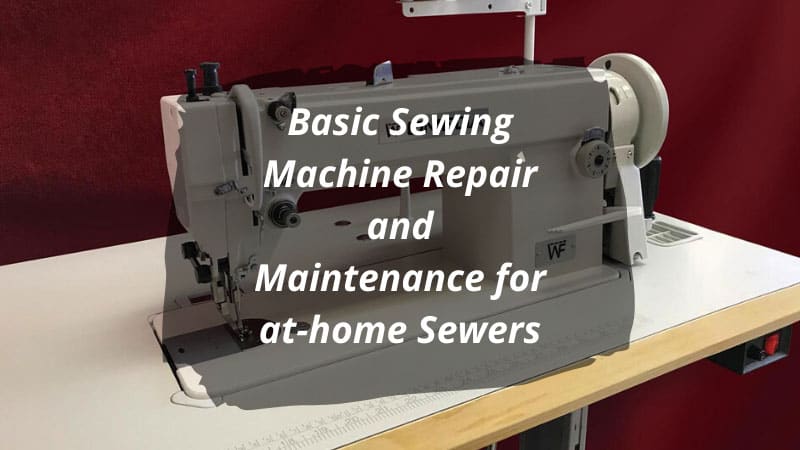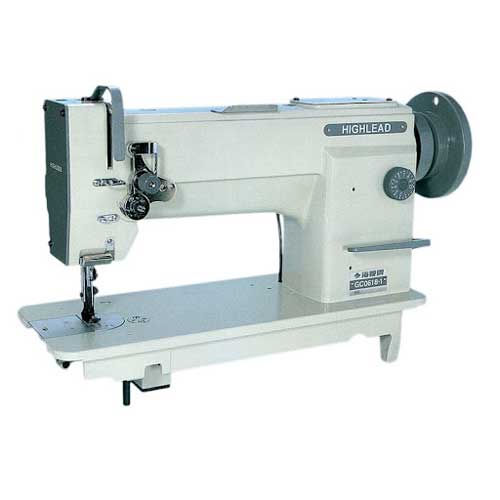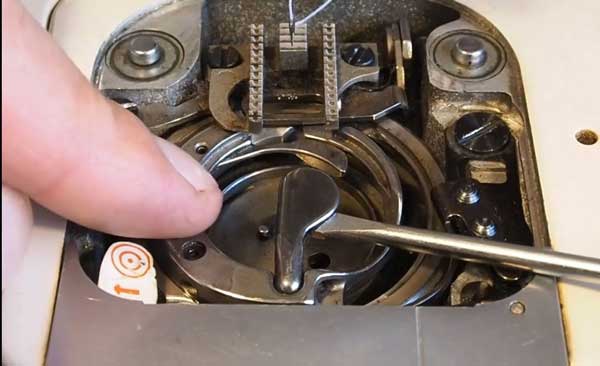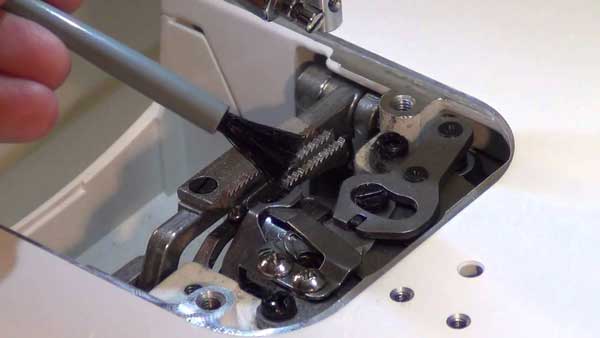Basic Sewing Machine Repair and Maintenance for at-home Sewers
by William Sanders
A key element for the longevity of sewing machines is proper care and maintenance.
However, they also need to be fixed up whenever there is some type of fault in them. At that time, the right cure must be provided. Now, the sewing machine you have at your home also needs a bit of your attention.
If you do not know your way around the care, maintenance, and repair of the domestic sewing machine you use, then you will find the answers to all your questions right here.
So, keep reading for solutions to all the basic sewing machine repair and maintenance issues.
Contents

What to Do if Your Sewing Machine Needs Repair?

Fixing a broken sewing machine is not the easiest task in the world. There are many things you have to know and be prepared for before you start your task. But, the most important part would be to know what is it that you must fix.
And, in order to run a proper diagnosis of the sewing machine, you will have to open it up and do a thorough check-up. You will get a proper break down of what you must do to get the best results for each of the parts.
Disassembling the Front Cover
So, the first step here is not difficult; all you have to do is take a flat screwdriver and unscrew the screws to remove the front cover of the machine. Right after you remove this part of the tool, you will see two things: the needle bar mechanism and the presser foot.
Do not be worried or scared to touch anything because all the parts inside are made of metal, and you are not at risk of breaking anything. This compartment of the sewing machine is mainly opened up for light bulb repair.
Working on the Mechanism of the Needle Bar
Other than changing the light bulb and oiling up the bushes, there might be yet another reason for you to open the front cover of the equipment. It is to reposition the needle. You can do so by fixing the way the screw holds the bar, and all you need for that is a screwdriver.

After tightening the screw, you could choose to oil the needle bar, but you have to be aware that too much oil might lead to stains on the fabric you will be sewing. So, a drop or two should be sufficient for the job. Make sure to use the proper kind of oil for this job; otherwise, you will be in a mess.
Shuttle Hook of the Sewing Machine and Needle Plate
The next parts you should know how to repair or maintain the shuttle hook and the needle plate. You will have to deal with the thread of the bobbin looping, getting tangled, or even bouncing if you let the shuttle get rusty or dirty. If it does, then a good clean-up job is a must.
Now moving on to the needle plate, if this is not in the right condition, then chances are that the thread you are using will break over and over again until it is fixed. This happens as with each strike; notches start to appear. That is what leads to the breakage.
To avoid both of the scenarios played above, you have to keep them nice and clean at all times. Use specialized brushed that are made just for the purpose of cleaning and fixing the two parts of the machine.
Disassembling the Body of the Machine
Here in this part, you will find out the steps you must take in order to take the sewing machine apart and either repair or replace the parts inside that need fixing. You should follow along with the steps so that you do not make any mistakes and end up damaging the tool beyond repair.
-
Step 1: Remove All the Knobs and Screws
So, the first thing you have to do in order to take apart the body of the sewing machine is to make sure you have unscrewed the screw. If this not hard at all, you will only need a screwdriver for the job. But do keep in mind that there might be some screws hiding in holes. Keep an eye out for those.
Along with the screws, you have to remove all the plastic bodies from the sewing machine. The knobs of the stitch selector have to come off. A little bit of strength will be needed to pull them off without causing any damage. Also, place them all in one place, so you do not lose anything in the process.
-
Step 2: Removing the Latches
The next thing on your to-do list should be to make sure you remove anything that is holding the two pieces of the plastic together. You have already gotten rid of all the screws that secured the sewing machine's cover. Now you must deal with the latches.
If it is on the backside of the sewing machine, you want to remove them. You have to unscrew the one screw with is located near the shuttle hook area. By taking that out, you should be able to remove the back cover.
-
Step 3: Separating the Two Halves of the Case
Essentially, the cover of the sewing machine is made of plastic. The plastic was molded and then separated into halves. Then the main body of the machine was enclosed inside the plastic with latches and screws.
Even when you have removed all the things holding these two pieces together, you will still have to use a knife to push them away from each other.
You have to fit a screwdriver or a knife between the two halves and try to pry them apart using some force. The part with the cords with be the most difficult to separate, and thus, you will have to put some more pressure behind your movement.
Continue doing this until you have successfully detached the two halves. Now, something you should not forget when you are in this task is to lift the presser foot lever. Otherwise, you might end up damaging it or breaking it with the force you apply with the knife.
-
Step 4: Back of the Sewing Machine
If you want to make repairs to the mechanism of the sewing machine, then there is really no point in opening up the front cover. You only have to deal with that proportion when you have a problem with the sewing, not when there is any mechanical faults or defects in the tool.
So, when the back of the machine is removed, you have to make assessments of all the parts you see. You might have to take them apart and check whether the parts are alright or not. When you do see a problem in any of them, some repair work will be needed before you can put it all back together again.
Disassembling a sewing machine when you do not have much knowledge about the tool is not the wisest decision. There are many things that could go wrong during the whole process. So, rather, it is a better option to get a professional to take a look at it.
And if that is not an option for you or it is just too expensive, then you should take a look at all the instructions provided to you in the manual. That will be your best guide as you will know how to work your way around that specific model of the sewing machine.
Hardest Parts to Repair

Even though most adjustments and repairs of the sewing machine are not going to be that tough, but there are some problems that are harder to deal with. And by deal with I mean repair.
-
The Drive Belt
It is one of the most important parts of the sewing machine's mechanism. A replacement belt or a repair might be needed when you have used the tool for a very long time, and it has started to become too noisy. Along with the noise, you will see that your sewing machine will not take as much of the fabric.
When you see these signs, you will know it is time to get things fixed. Well, repairing this part of the machine might be a bit too complex for you, so rather, it would be better if you let someone experienced handle it.
-
The Top Gear
Most domestic or at-home sewing machines have top gears made of plastic. There is nothing wrong with the non-metallic gear; however, you are likely to face a problem if you use the machine to sew up thick sheets of fabric.
Jeans are an excellent example of this situation. If you keep sewing denim pants or shirts with the machine, then soon you will notice breakage and damage in the top gear.
-
Plastic in the Shuttle
We all know that there is a lot of wearing and tearing when it comes to plastic. You will see that in every situation with the plastic detailing in the shuttle.
Now, the sewing machines we use at home are manufactured by various different companies. So the inside of the machine will also not be the same. You have to read the instructions they have provided you with to get this part fixed if you do start noticing something wrong.
How to Maintain the Sewing Machine?

As I have said before, prevention is better than cure, and we should all stand by it when it comes to the health and the life expectancy of our sewing machines. The better we take care of them, the longer they will work for us.
Clean off the Dust
There are many nooks and crannies in the sewing machine, and the chances are that dust and debris will get stuck there. You would obviously not want to work on a dirty and dusty looking piece of equipment. But that is not the reason you should keep them clean.
The collection of dust might wind up getting inside the machine and cause damage to the parts. Getting those fixed will cost you a pretty penny. So, just take a vacuum cleaner cervix and clean up all the corners.
Change the Needle Regularly
When you are sewing, the needle does one of the most important parts of the whole process. So, if your needle is not able to do its job properly, then you will have a problem. It is advisable for you to change out the needle after using one for 7 to 8 hours.
Anything more than that, your needle will not be able to give you the result you desire.
Keep the Bobbin in Check
The thread from the bobbin or the lower thread, as it is called by some, is used to form the stitches along with the upper thread. In modern sewing machines, the bobbins are at the front of the tool and very easily accessible. Make sure there is no dust inside the bobbin case.
Also, dust is not the only problem. Due to the needle strikes, you might feel some roughness on the surface. Use some emery to smooth it out properly.
Apply Proper Amount of Lubricant
We have all heard of the phrase 'well-oiled machines'. In the case of the sewing machine, this is applicable too. You have to make sure the tool you are using runs as smoothly as possible. And, that is only possible if it has been oiled correctly or some kind of lubricant has been applied.
The oil is used so that the metal or plastic parts inside the tool do not rub up against one another. That would cause resistance as well as lead to faster wearing of the parts.
Final Thoughts on Sewing Machine
Taking small steps every other day to ensure your sewing machines runs well and provides you with a good outcome is a much better option than having to repair it. Now, if they do need repair, you now know some of the basics to get the work done.
 |
 |
 |
 |
 |
 |
 |
 |

About William Sanders
William Sanders was born and raised in California. After receiving his Master’s degree in information science from San Diego State University, he started working as a city councilor. In his spare time, William enjoys playing best-selling MMORPG games such as World of Warcraft and Fnal Fantasy, where he often takes on the role of guild leader with hundreds of players collaborating for success under his leadership. William is also a regular contributor to some popular magazines such as San Jose Mercury News, Gleanster Research, and Palmgear.
Leave a Reply
You can get FREE Gifts. Or latest Free phones here.
Disable Ad block to reveal all the info. Once done, hit a button below
 |
 |
 |
 |